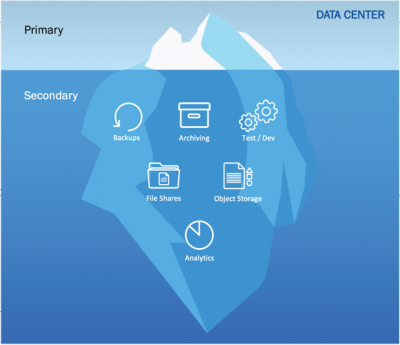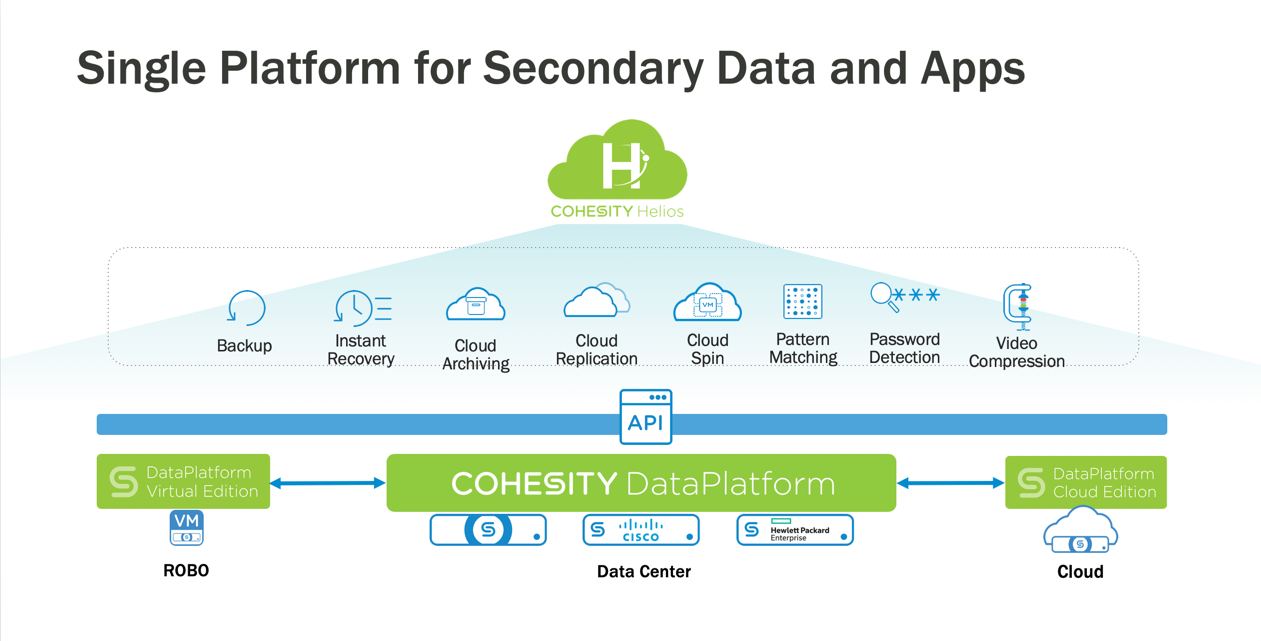VMworld 2018 Europe - vRetreat
Barcelona Cohesity VMware VMworld VMworld 2018 VMworld2018 vRetreat
Published on 8 November 2018 by Christopher Lewis. Words: 1259. Reading Time: 6 mins.
VMworld 2018 started quickly for me. After taking the 10:20 BA Flight from Heathrow I landed at ~13:30 local time. I had just enough time to drop the bags at the hotel before heading to the #vRetreat. We were being hosted by Patrick Redknap and sponsored by Cohesity .
#vRetreat

This was my first experience of the #vRetreat concept and I wasn’t disappointed. The session was given by Cohesity’s charismatic CTO - Global Field, Rawlinson Rivera ( @punchingclouds ) who talked both about their current portfolio and Vision.
Who are Cohesity?
If you didn’t know, Cohesity is a Secondary Storage vendor. It was refreshing to have Rawlinson impress (multiple times) that Cohesity IS NOT (and is not trying to be) a Primary Storage Vendor. “We’re just are not built for that”, but he was also keen to impress that “Secondary Storage doesn’t mean second best.”.
But what that does being a Primary or Secondary storage vendor actually mean?

A Primary Storage Vendor (such as Pure, EMC, HP, Hitachi, and of course VMware vSAN) is responsible for hosting data (whether that be Virtual Machines, files or databases) in the normal day to day running of your environment. To do this (based on business requirements), you need may super-fast, highly available with sub-millisecond response times.
A Secondary Storage Vendor provides the additional storage related services, and capabilities that are not always provided by the Primary Storage Vendor, such as backup, recoverability, archive etc.
Rawlinson did clarify that, in the short-term during the recovery of virtual machines, assuming the solution was sized correctly, the Cohesity solution was more than capable of providing suitable storage to run VMs in environments. Especially where performance isn’t a key, such as test and dev environments. In fact, the Cohesity Instant Recovery technology relies on the fact that the VM is recovered locally. The VMs are then live migrated to back to the primary storage solution.
News Flash: Secondary Storage is Complex
Cohesity feel, given the amount of services and functions provided, that Secondary Storage Vendors/solutions are not only complex, but can also be:
- Fragmented with customers having multiple vendors with overlapping capabilities and services.
- Inefficient with multiple multiple vendors, comes multiple copies of the data being held in multiple places.
- Dark with poor visibility into the solution that exposes compliance risk.
This all leads to an issue that Cohesity termed Mass Data Fragmentation. Mass Data Fragmentation not only has an impact on the amount of secondary storage required (holding multiple copies of data in multiple different systems takes space), but also leads not knowing which version of the file is the most up to date and current. The impact of this is only magnified with the migration to public cloud services such as AWS, GCP and Azure.
The Cohesity DataPlatform goes someway to address the issue by consolidating all of the secondary storage capabilities into a single platform that has feature parity not only for the On-Premises Data Centre but also for the Public Cloud.
Cohesity DataPlatform
The Cohesity DataPlatform provides a single platform for multiple secondary storage services/functions, including Backup, Instant Recovery and Cloud Archive. This is provided in 3 different editions (Virtual, Cloud or Physical) with full feature parity between them that enables a consistent API-driven approach across the different clouds, Private or Public. The platform supports NFS, SMB and S3.

Cohesity Helios - A Single Pane of Glass
From Cohesity’s point of view, although everyone tries to achieve it, there is no such thing as a Single Pane of Glass management interface. I wholeheartedly agree. When each monitoring tool has their own “Single Pane of Glass” it results in a colourful rose-tinted stained glass windowed view into the world that isn’t good for anyone.
It was refreshing to hear that Cohesity class their platform’s API as their “Single Pane of Glass” interface. Their REST API can be consumed via other monitoring or management solutions giving access to the data.
One new thing Cohesity have released this year is Cohesity Helios. Helios, which is currently free with the Cohesity platform, is a Software as a Service (SaaS) offering. Helios allows cross-cluster, API driven management that uses Machine Learning to gain operational insight into the storing of secondary data.
For more information on Helios, check out this link .
Cohesity Differentiators
So what makes Cohesity different to other hyper-converged secondary storage vendors?
1. Scalability without limits (sort of)
The ability to scale the Cohesity Data Platform to encompass as many nodes as required within a single cluster is a cool feature. Add that to the fact that according to research/study carried out there is near linear performance up to 256 nodes (~5PB). Also as everything is Policy Driven, a single cluster can be used to provide the secondary storage solution for multiple systems without the need for segregation where, perhaps there was need to previously. Obviously, when regulatory frameworks need segregation that can also be achieved with multiple Cohesity clusters.
Check out the report for more information on the Cohesity scalability.
2. Data Reduction
Like most vendors in this space, the Cohesity Platform completes data de-duplication globally (modes: Inline, PostProcess and NoDedup) within the cluster to reduce the amount of data fragmentation and the amount of storage used to store the data. Cloud Archive is also de-duplicated. In addition, the platform supports compression as another way to further reduce the sizing requirements.
The key advantages of the Cohesity Platform are:
- Variable size de-duplication which can provide 2x-3x more space savings
- Cloud archival savings are at least 2x more than other competitors
3. Global Actionable Search
Cohesity Helios, providing a google-like global search capability across all Cohesity clusters to be able to Protect, Recover, Clone or Mount data within a few clicks.
4. Instant Mass Restore
Traditional data restore can take time to complete depending on when the last full data backup has been taken and how many incremental/differentials restores need to be completed. Cohesity fully hydrate incremental backups using their patented SnapTree technology allowing for the instant recovery of thousands of VMs (or a complete site) at any point in time. As discussed above, the recovered workloads run directly from the Cohesity platform before being migrated back to the primary storage.
In Summary
Cohesity have a really interesting product and a message. Over and above the solid offering they have in this space, one thing other that did peak my interest was (according to Rawlinson) the ability to backup on-premises and the recover those services into the public cloud. This included the ability to, via an agent, backup SQL Services to native public cloud database services (such as Amazon RDS or Azure SQL) and back again. That could be very interesting to see.
One thing is sure, if you are on the look out for a Secondary Storage vendor, Cohesity should definitely be on the list of vendors. If you want to find out more information head on over to www.cohesity.com .
Finally
As this was my first #vRetreat, I was unsure what to expect. It was good to get the opportunity to here from Cohesity and Rawlinson Rivera and I hope to be able to attend more in the future. Thank you to Patrick for inviting me along.
Published on 8 November 2018 by Christopher Lewis. Words: 1259. Reading Time: 6 mins.
- Introducing the Super Metrics Repository
- Creating Super Metrics for Counting Ascendent/Descendent Object Metrics in a List View
- Creating a Custom Resource Action - Part 1: Getting Started & API Discovery
- Operating a Private Cloud - Part 3: Creating a Pricing Card in VMware Aria Automation
- Operating a Private Cloud - Part 2: Creating a Pricing Card in VMware Aria Operations
